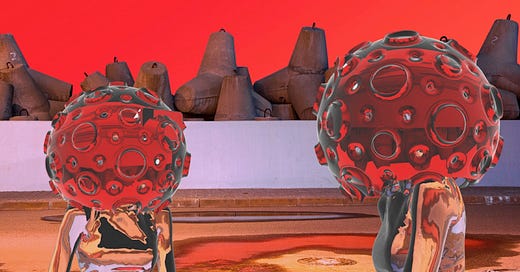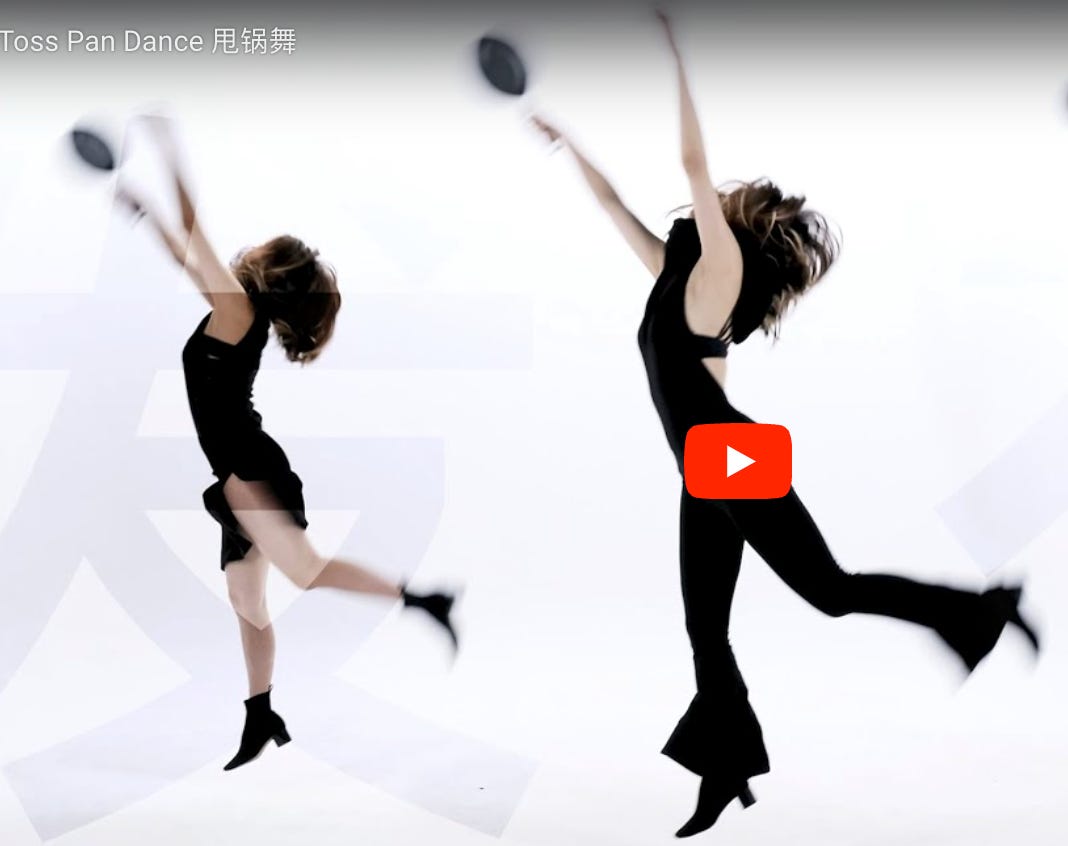AI + Art = Engineered Art
Jiabao Li's philosophy of creativity is turning breath into food, mice into mentors, empathy into action, and curiosity into knowledge. Is engineered art the future?
Creative computer-based technology has come a long way from its daring start in the 1950s. Developments were slow back then, but that gave artists and the public time to adapt. Now, revolutionary digital tools are overwhelming our ability to absorb them.
With so many ways to create, I wondered how art students find their medium and mission. As for professors, how do they teach students when their tools are updating in real time?
For answers to those questions, as well as some personal insights on how one navigates through the endless choices, I spoke with Jiabao Li. She represents a new breed of artist, those who enter the practicus of art through technology. Though her work covers a wide range of topics and futuristic approaches, it coalesces around the classic idea that art can be used to ignite curiosity and communicate knowledge.
Raised in China, she studied engineering in Singapore, where she was drawn to fine art. From there, she moved to Harvard, where she received her Master's in Design Technology. She also spent time at MIT's Media Lab, home to early computer artists and the birthplace of Processing, a software that creates generative art.

Design and engineering are both solution-based fields that satisfy a function. Fine art is generally unfettered by utility. It serves as an outlet for human imagination. When Jiabao first thought to blend the functionality of engineering with her boundless artistic interests, "Everything exploded in me,” she said.
Tell me more about your chosen path?
In art, the whole intersection (between art, engineering and design) can be a field, and it fits me so well. After graduation, I was at Apple. I was there for four years. We worked on exciting new products using all the latest technologies. They encouraged us, there was no idea too wild.
It sounds like the perfect place to pursue your interests. Why did you leave Apple?
At that time, I was also making art and realized I wanted more freedom. I want to establish a field and be my own leader. I think academia is a good place for that, so I came to Austin, to UT, and opened my lab.

People who create new artistic directions generally produce manifestos that outline their conceptual philosophy. Are you working on a philosophy?
Yes, I like to say I'm practicing philosophy as making and creating. Instead of writing, I'm working on these projects.
How do you teach untested media to inexperienced students?
First, I teach them about related products on the market. Then, I let them try out the media and teach them how to use it.
Second, I teach them to have a critical eye. When I teach Interaction Design, there is a huge chapter on the critical issues around AI, such as copyright, bias, and all this sort of discussion. We read news articles and the latest Human-Computer Interaction science papers and then discuss them.
The third stage is, through those critical eyes, what can they create? That ties back to the first and second stages. This phase is more interesting, speculative, and critical than just utilizing the media.
Eco-centric Design: Interspecies Co-Creation is definitely cutting edge; how does one study that?
I would say that right now, all of my classes are emerging fields. We couldn't find any books for the class on eco-centric, inter-species co-creation work, so our reading resources and the syllabus became the new textbook.
I'm writing a book around interspecies co-creation now. I've started by gathering research on artists working with animals, the environment, and plants, and I'm writing down the philosophy surrounding their ethical considerations. For example, what does agency mean to them? What does the concept mean to them? Like this book, much of that comes out of the class.
What about aesthetics, the look or style of the art? Does that matter?
I always think aesthetics are important, especially coming from a design background and from Apple. My work always needs to be highly finished.
Sometimes, one may describe a work as beautiful, and sometimes, the aesthetics serve the concept and the target audience. Actually, even the concept of the target audience is something I learned from design. In art, people don't talk about the target audience that much.
You tend to show your art in public settings. Do you also create work for galleries?
I am actually trying to get out of that four-wall white gallery space. There is so much more of the world that is untouched (by art) that I kind of wanted to get out of that bubble.
I think about all kinds of mediums and how the work comes to be in front of people. It could be in somebody's living room, but that's just one family.
I look for the medium that gives the biggest impact. Experiential works can live in multiple places, it could be a one-off exhibition, or it could be something that lives online and can be seen by everyone.
Some of my work - like the Elephant Song - was targeted specifically for China. Its purpose was to create a viral discussion so that we could influence a court decision around (the humane treatment of captive Asian) Elephants. It’s on going.
How does your interest in technology and science shape your artistic mission?
In relation to my background as both an engineer and a designer who makes products for the general public and speaks the language (of technology,) yes, it does. Also, because I'm not trained by art schools, I don't worry about how to write and speak about things (in artspeak.)
Some might call your pieces activist art, and many activists create work that aggressively confronts the viewer. Instead, you choose to engage your audiences using playful or interactive technologies. Why?
I want to speak to people who don't care about art at all. They are curious when the piece is interesting, weird, fun, and hilarious; then they chime in. For example, in the piece Nocturnal Fugue (shown at the Congress Avenue Bridge in Austin, Texas, 2024), hundreds of people came. Some were coming for the event hosted by the Contemporary Museum and the Fuse Box Festival, but the majority were just biking or running around or going there to see the bats, and some were tourists. They saw this mask that people were holding up and shouting, "AKA, AKA." They asked, "What the heck is that? I want to try?" So, the piece attracted many people who didn't care about artwork.
They tried it and said, "Oh, this is amazing, it's about wild bats and how they communicate." So, yes, I'm pretty happy about that.


During the pandemic and the quarantine, I made a satirical dance video, Toss the Pan Dance, to criticize government officials for evading responsibility and playing the blame game. That went viral in China. It even reached some in rural areas where people watch Tic Tok and saw the video. They have no museums; they have no art galleries in those counties. Yet people actively participated in the dance, and I think that's much better than just seeing a work of art. Being playful was also my way to get around censorship.
My art has multiple roles. Inside me, there's the creative play and the artistic side, and I also need to make functional things that can fundamentally change people's lives. Mouse Couch, for example, is one part conceptual, and the other is the physical application because this testing can save people's lives. I feel a need to be responsible. Like my start-up, Endless Health, it helps coach you to live a better lifestyle.
When I showed the Menstrual Garden in New York, it attracted multiple people who were gynecologists, nurses, or from different walks of life, not just the art crowds. Many didn't know that menstrual blood had stem cells in it. Even stem cell scientists were surprised to learn about it through the art. So, those are other examples of people who come to see the art and learn something, too.
How has teaching shaped your art?
When I write books, teach classes, or make art, I'm creating not just individual work but a new field, and that's what I wanted when I came to academia. When you create a new field, you need a community; you need progeny to further it along and build new branches, and the journey brings many interesting ideas.
What do you think about technologies impact on art and culture?
When you step back and consider how science and technology influence culture, that's a huge, complex problem. Sometimes, I feel when scientists focus on that one thing they are trying to do, they ignore the cultural and social impact of their work, and that is what art is good at talking about. My art is not just about science communication; it provides a critical view. In my work, I want to use the best of art, science, and design to communicate with the world.
To view Jiabao’s artwork in greater depth and learn more about her ideas, go to:
To view her work in person, here is a list of upcoming exhibitions.
Nocturnal Fugue, Sheffield DocFest in UK, June 13 - July 31
Squeeker: The Mouse Coach, Tokyo, Japan, July 26 - Aug 6
4 works are featured at Ars Electronica, Linz, Austria, Sep 3 - 8
Squid Map, Istanbul, Turkey, October







